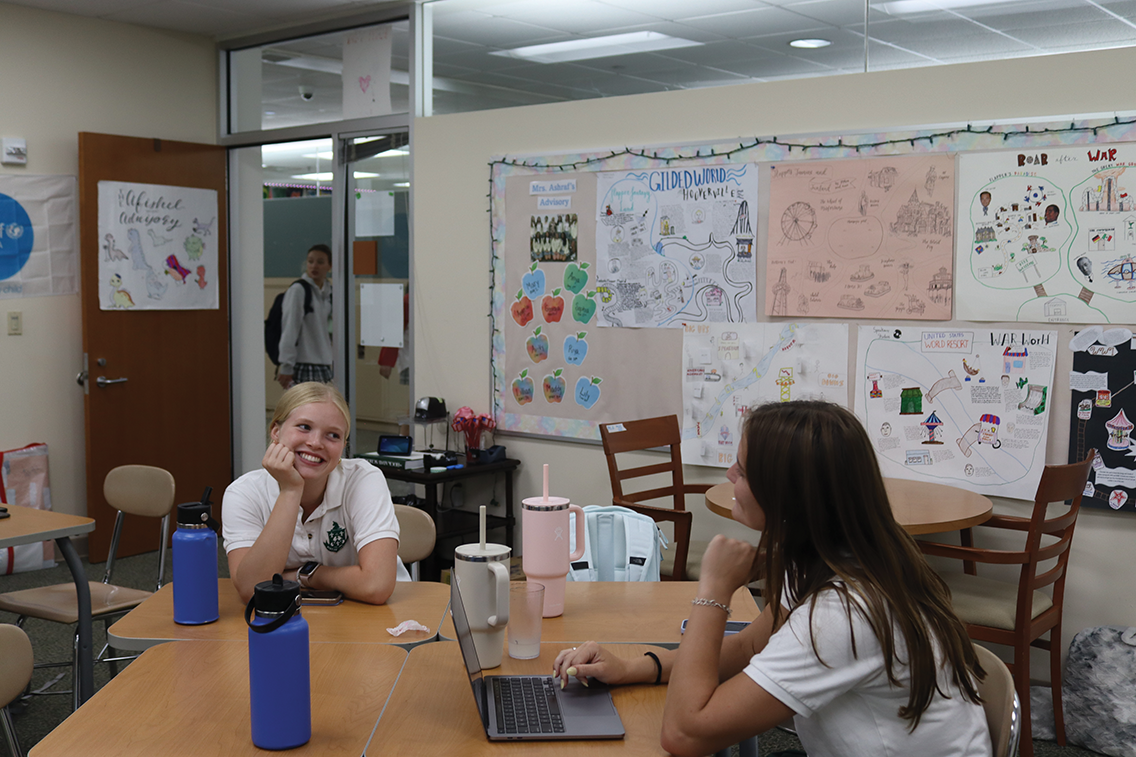Tackling Type 1 diabetes
With her grandmother and mother, Roosevelt attends a JDRF luncheon. Diagnosed with Type I diabetes at age 5, Roosevelt works to further awareness and to benefit others living with the disease. photos courtesy of Elizabeth Roosevelt.
November 13, 2020
At the age of 5, senior Elizabeth Roosevelt received a life-changing diagnosis: Type 1 diabetes. Since then, she has used her condition as an opportunity to advocate, raise awareness and educate people about diabetes. Roosevelt began raising awareness for Type 1 diabetes in 2009, and has since become invested in two organizations: Juvenile Diabetes Research Foundation (JDRF) and T1 International. Both organizations are nonprofits and focus specifically on Type 1 diabetes.
“I am so passionate about [diabetes], but to actually put that feeling into action is awesome,” Roosevelt said.
JDRF fights Type 1 diabetes by funding research and advocating for policies that accelerate access to new therapies. The foundation provides a support network for millions of people around the world.
“With T1International, I got involved because the insulin prices in the United States are becoming more and more of a big deal,” Roosevelt said. “I keep hearing these awful stories about people who cannot afford insulin and are crossing the border to Canada to be able to pay for it. Even people I know, my friends, are struggling to afford it, so it became a personal thing. I really wanted to get involved.”
A non-profit led by people with Type 1 diabetes, T1International advocates and supports local communities to stand up for their rights to access insulin and diabetes supplies.
“Our vision is that we believe in a world where everyone with Type 1 diabetes — no matter where they live — has everything they need to survive and achieve their dreams,” Beth Edwards, administrative assistant of T1International, said.
To achieve their goals and complete their mission, T1International offers communities the emotional, mental and physical tools they need to stand up for their rights so that access to insulin and diabetes supplies becomes a reality for all.
More than 40 million people in the world have Type 1 diabetes, and many of these people live in countries with poor healthcare that lack access to necessary life-altering medicines and resources.
Edwards explained that living with Type 1 diabetes is like living with a full-time job that you didn’t sign up for, that you have to work hard at and yet you don’t ever get paid or vacation days for it.
“Living with Type 1 diabetes has made me more resilient because, with this condition, you never have a break, not on your birthday or on Christmas,” Roosevelt said. “It is such a constant thing.”
Roosevelt explained Type 1 diabetes occurs when a person’s pancreas can no longer create insulin or only creates a very limited amount. Insulin is a hormone that allows blood sugar to create energy when it enters one’s cells. Without it, sugar builds up in the bloodstream, unable to flow into the cells, inducing a dangerously high blood sugar level.
“I was showing the major symptoms of Type 1 diabetes before I was diagnosed – losing weight quickly, using the restroom often, drinking a lot of water – and once we found out, the doctors realized that my organs were just shutting down,” Roosevelt said.
Hockaday Nurse Katie Barnes said some people may not recognize the seriousness of the disease.
“I think some people, and perhaps even society, do not understand how serious of an illness Type 1 diabetes is and that it is constantly managed, day-to- day, hour-to-hour, which is vital for the people who live with this condition,” Barnes said.
At the time of Roosevelt’s diagnosis, technology wasn’t nearly as developed as it is today which led to many immediate changes in her day-to-day life. And, with her young age, Roosevelt’s parents had to constantly monitor her condition.
“I got on an insulin pump pretty soon after we found out, but it was really new and scary for all of us,” Roosevelt said. “For a long time, my mom had to wake up about seven times a night in order to manually prick my finger to check my blood sugar level.”
As she grew older and technology advanced, Roosevelt took charge of observing her own blood sugar level with the help of her Tandem Insulin Pump and glucose monitor that connects to both her phone and Apple Watch. Even though these devices make things easier, diabetes is still in the back of Roosevelt’s mind all day, every day.
“[Having diabetes] has made me a lot more responsible because it is vital to my health,” Roosevelt said. “Just knowing that I can tackle this every single day; that if I give myself too much insulin, I can end up in the hospital at the end of the day.”










